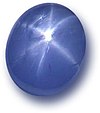Wikipedia:WikiProject Rocks and minerals
| This is a WikiProject, an area for focused collaboration among Wikipedians. New participants are welcome; please feel free to participate!
|
This WikiProject's goal is to define a standard infobox for using in rock and mineral entries. Eventually, after general agreement, project's focus will change to facilitating the conversion of the existing rock and mineral articles to the agreed upon format discussed in Wikipedia talk:WikiProject Rocks and minerals.
Related Wikiprojects[edit]
Parentage[edit]
Other[edit]
- WikiProject Gemology and Jewelry is closely related.
- Other related WikiProjects are WikiProject Elements, WikiProject Chemicals, and its Chemical infobox discussion.
- Also see the various discussions on infoboxes, currently broken into at least two areas: infobox and the infobox talk page.
 |
Mineralogy task force |
|
Barnstar[edit]
For recognition of contributions to the Rocks and Minerals Wikiproject, place {{subst:The Mineralogy Barnstar|message|~~~~}} on the recipient's talk page. It should look like this:

|
The Mineralogy Barnstar | |
| message name (talk) date/time |
Participants[edit]
Inactive
|
General Strategy and Discussion forum[edit]
- /General
- /Infobox discussion (AKA /Taxobox discussion...seem to be discussions going on here AND on talk page. Hmmm.)
- /Worklist
- /Draft on mineral notability
- Wikipedia:WikiProject Rocks and minerals/Assessment
Template[edit]
Unused template collapsed for page navigation ease click show to see
| ||||||||||||||||||||||||||||||||||||||||||||||||||||||||||||||||||||||
|---|---|---|---|---|---|---|---|---|---|---|---|---|---|---|---|---|---|---|---|---|---|---|---|---|---|---|---|---|---|---|---|---|---|---|---|---|---|---|---|---|---|---|---|---|---|---|---|---|---|---|---|---|---|---|---|---|---|---|---|---|---|---|---|---|---|---|---|---|---|---|
| ||||||||||||||||||||||||||||||||||||||||||||||||||||||||||||||||||||||
I based the content of this table on information found in various places:
I based the format in part on the table used for chemical compounds such as:
Explanations[edit]
- There's much discussion about colors in the infobox discussion. I don't see that, in this topic, more than one color adds any significant or obvious information. (E.g., we could do one for metamorphic rocks, one for sedimentary rocks, etc., but I don't know that it's particularly useful to do so.) Elf
- The compounds table doesn't have a title with the name of the compound; instead it's listed as a small item under General. I think it's clearer to have the name at the top, as with animals and several other table categories. Elf
Comment history from original location[edit]
- Good choice of colour. It really stands out. Is it possible to condense it a bit? Maybe this should be moved to a Project space. mydogategodshat 09:45, 3 Feb 2004 (UTC)
Examples: rock templates[edit]
Here are possible rock infobox templates.
International template below.
Template (international)[edit]
Unused template collapsed for page navigation ease click show to see
| ||||||||||||||||||||||||||||||||||||||||||||||||||||||||||||||||
|---|---|---|---|---|---|---|---|---|---|---|---|---|---|---|---|---|---|---|---|---|---|---|---|---|---|---|---|---|---|---|---|---|---|---|---|---|---|---|---|---|---|---|---|---|---|---|---|---|---|---|---|---|---|---|---|---|---|---|---|---|---|---|---|---|
| ||||||||||||||||||||||||||||||||||||||||||||||||||||||||||||||||
This would be my suggestion. There are two reasons:
- 1. common characteristics into more details
- 2. it will be easier if to translate if its the same in all languages, as there are already some in German.
In the German project there are there missing:
I hope the translation is correct. Please have a look at it. For example:
Crystal class: is a classification by Carl Hermann und Charles-Victor Mauguin (Hermann–Mauguin notation) or Arthur Schoenflies (Schoenflies notation).
Gaucho 15:57, 9 Feb 2004 (UTC)
(Discussion moved to talk page. Elf 18:28, 12 Feb 2004 (UTC))
Pages needing attention[edit]
- Category:Rocks and minerals articles needing attention
- University of Houston, Department of Geosciences, 'adopt-a-mineral' term paper for the course Geology 3370 - Introduction to Mineralogy, prof. Jonathan E. Snow, instructor
- Fall 2007: pabstite, atheneite, lawsonite, tschermakite, covellite, moissanite, wadsleyite, afwillite, wollastonite, iddingsite, penroseite, scheelite, sperrylite, santabarbaraite, celsian, julgoldite, krutovite, jerrygibbsite
- Fall 2009: chambersite, alacránite, coyoteite, balangeroite, calumetite, bursaite, cleusonite, colimaite, creedite, clearcreekite, campigliaite, changbaiite, cesanite, cervandonite, coconinoite, boleite, chaidamuite, ashburtonite, bilinite, baotite, bararite, athabascaite, coloradoite, bonaccordite, bystrite, bastnäsite, chamosite, bukovite, beraunite, ashoverite, bityite, cyrilovite, bergenite
- Fall 2011: garnierite, perhamite, geigerite, partheite, chrisstanleyite, schreyerite, carnallite, ullmannite, jarosewichite, murdochite, delafossite, maricite, lorandite, warikahnite, donnayite-(Y), satterlyite, dollaseite-(Ce), baddeleyite, alforsite, bornite, perovskite, coffinite, dickite, zanazziite, hübnerite, penikisite, braggite, huttonite?, kankite?
- Fall 2013: brazilianite, chalveticeite, hidalgoite, natromontebrasite, guyanaite, eveslogite, ephesite, hubeite, hiärneite, gordaite, greifensteinite, gugiaite, farneseite, ferrogedrite, ferronigerite-2N1S, franklinphilite, chatkalite, bicchulite
- Univ. Houston, Earth Materials, Mrs. Catlos: eveite (Fall 2010)
- Newbies: User talk:Tony00345 (pseudowollastonite, 2009), User talk:Friedshrimp007 (ericssonite, 2010), User talk:Rshah1018 (raspite and roselite, 2010), User talk:Jburke430 (chesterite, 2010), User talk:Kelhansard (cymrite, 2010), User talk:Molyru (grandreefite, 2010), User talk:Skibo112 (schäferite, 2010)
- July 2014: The entry for Fullers Earth[1] discusses only the cosmetic product. I don't have the expertise to edit this, but perhaps the British Geological Survey article at [2] is a good start if somebody has the time and inclination
- October 2020: Category talk:Bismuth minerals, Category:Radioactive minerals - a comment is needed about the radioactivity of bismuth minerals (to prevent edition warring)
Requests[edit]
- Request picture
- Add {{reqphoto|mineralogy}} to the talk-page of articles that require a picture. View the requests: Category:Wikipedia requested images of mineralogy
- Requested articles
- Note, critical mineral raw materials: most important mineral groups were known at the end of the XIX Century. Many U and uranyl minerals came later with the nuclear technology. Monazite, bastnäsite and loparite-(Ce) became important REE sources with the widespread use of electronics (monazite is not used because of the production of thorium waste as by-product). Rhodium and titanium is important too. --Chris.urs-o (talk) 07:36, 13 August 2016 (UTC)
- Wikipedia:Requested articles/Natural sciences/Environment and geology#Minerals
Statistics[edit]
- This table is automatically updated by Oleg Alexandrov's WP 1.0 bot. See the log for the latest changes.
| |||||||||||||||||||||||||||||||||||||||||||||||||||||||||||||||||||||||||||||||||||||||||||||||||||||||||||||||||||||||





